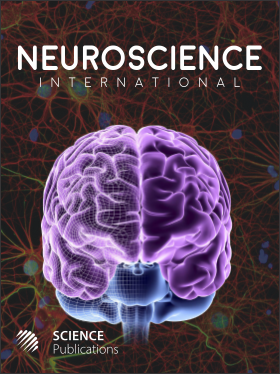Thiosemicarbazide Induces Partial Myoclonic, Generalized Tonic-Clonic and Status Epilepticus Seizures Depending on the Dose in the Rat
- 1 Integrative and Computational Neurosciences Team, Laboratory BNRNE, Hassan 1th University, Faculty of Sciences and Technology. BP: 577, Km 3.5 Casablanca Road, Settat, Morocco
- 2 Integrative and Computational Neurosciences Team, Laboratory BNRNE, Hassan 1th University, Faculty of Sciences and Technology. BP: 577, Km 3.5 Casablanca Road, Settat, Morocco
- 3 Applied Biochemistry and Toxicology Team, Laboratory BNRNE, Hassan 1th University, Faculty of Sciences and Technology. BP: 577, Km 3, Casablanca Road, Settat, Morocco
Abstract
The present study aimed to characterize the seizures produced by injections of Thiosemicarbazide (TSC), a glutamic acid decarboxylase inhibitor. It aimed also to evaluate the anticonvulsant effect of the antiseizure medications Phenobarbital (PHB), Valproate (VPA), and Phenytoin (PNT) and of the antipsychotics Chlorpromazine (CPZ) and Haloperidol (HAL) as well as the antidepressant SSRI, Fluoxetine (FXT). Male Wistar rats received TSC i.p. injections of 2.5, 5, 7.5, 10, and 20 mg/kg. The rat's changes in behavior and the onset latencies of seizures were recorded and compared using an ANOVA test whereas the incidences of seizures were compared using a c2 test. Seizure severity was categorized as Partial Myoclonic Seizures (PMS), Generalized Tonic-Clonic Seizures (GTCS), and Status Epilepticus (SE). At low doses, TSC induced a significant change in behavior indicating an anxiety-inducing effect. The threshold dose for PMS was 7.5 mg/kg and when the dose increased to 10 mg/kg, PMS progressed to GTCS. TSC 7.5 mg/kg dose also induced susceptibility to audiogenic seizure (p<0.005) while 10 and 20 mg/kg doses caused SE in a dose-dependent manner (p<0.05). PHB (30 mg/kg), VPA (200 mg/kg), PNT (30 mg/kg), and VPA + PNT (100+15 mg/kg) prevented SE and significantly reduced the incidence of TSC 10 mg/kg-induced PMS (p<0.05) and GTCS (p<0.001). These treatments also increased the onset latencies of seizures (p<0.001). HAL (1 mg/kg), CPZ (1 and 2 mg/kg), and FXT (1 and 2 mg/kg) significantly reduced the incidence of PMS (p<0.05) and GTCS (p<0.01). The occurrence of SE was completely inhibited by FXT (p<0.001). All doses of HAL, CPZ, and FXT increased onset latencies of GTCS (p<0.01) while HAL (1.5 mg/kg), CPZ (2 mg/kg), and FXT (1 and 2 mg/kg) also increased onset latencies of PMS (p<0.05). Our study validated TSC-induced seizures in rats as a dose-dependent model of PMS, GTCS, and SE.
DOI: https://doi.org/10.3844/amjnsp.2023.1.11

- 2,461 Views
- 1,430 Downloads
- 0 Citations
Download
Keywords
- Thiosemicarbazide
- Seizures
- Rat
- Antiseizure Drugs
- Psychopharmacologic Drugs
